Yoga Blog
Tracing the Roots: A Journey Through the Historical Evolution of Yoga
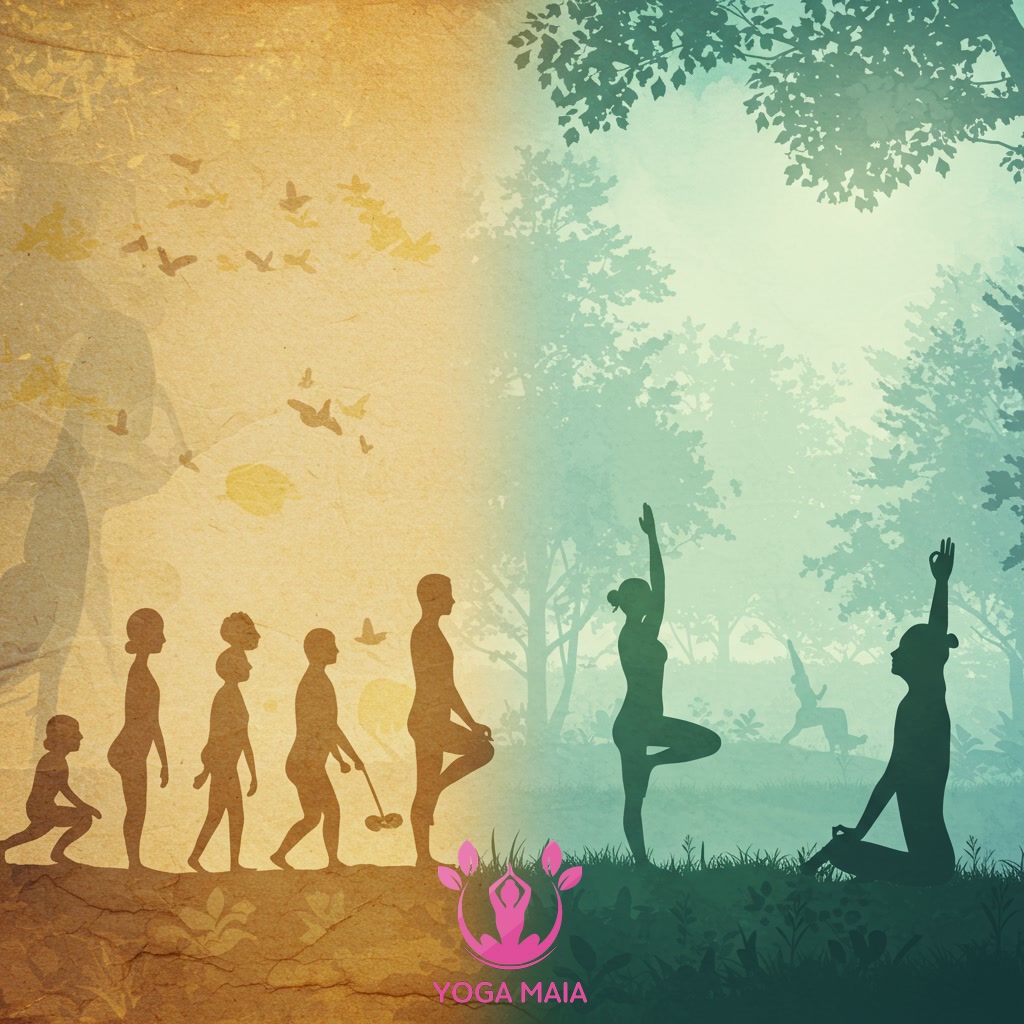
This content explores the origins and historical development of yoga. It traces the evolution of yoga practices and philosophies across different eras, examining key periods and influences that shaped its trajectory. The journey highlights how yoga has transformed over time, providing essential context for its diverse forms practiced globally today.
Table of Contents
- Section 1: Ancient Origins: From the Indus Valley to the Vedic Period
- Section 2: The Philosophical Bedrock: Yoga in the Upanishads and Pre-Classical Era
- Section 3: Systematizing Practice: The Classical Period and Patanjali’s Yoga Sutras
- Section 4: Evolution of Practice: The Rise of Hatha Yoga and Tantra
- Section 5: Yoga’s Global Journey: From India to the Modern World
Section 1: Ancient Origins: From the Indus Valley to the Vedic Period
The journey of yoga’s history begins in ancient South Asia, with potential roots traced back to the Indus Valley Civilization (around 2600-1900 BCE). Archaeological finds, particularly seals depicting figures in seated, meditative postures, suggest early awareness of contemplative practices. Following this, the Vedic Period (roughly 1500-500 BCE) saw the emergence of foundational texts like the Vedas and later the Upanishads. While not explicitly detailing physical postures as we know them today, these scriptures contain profound philosophical concepts about the nature of reality, consciousness, and the self (Atman), and introduce early ideas of tapas (asceticism), meditation (dhyana), and inner sacrifice, laying the groundwork for future yogic thought and practice focused on spiritual discipline and connection.
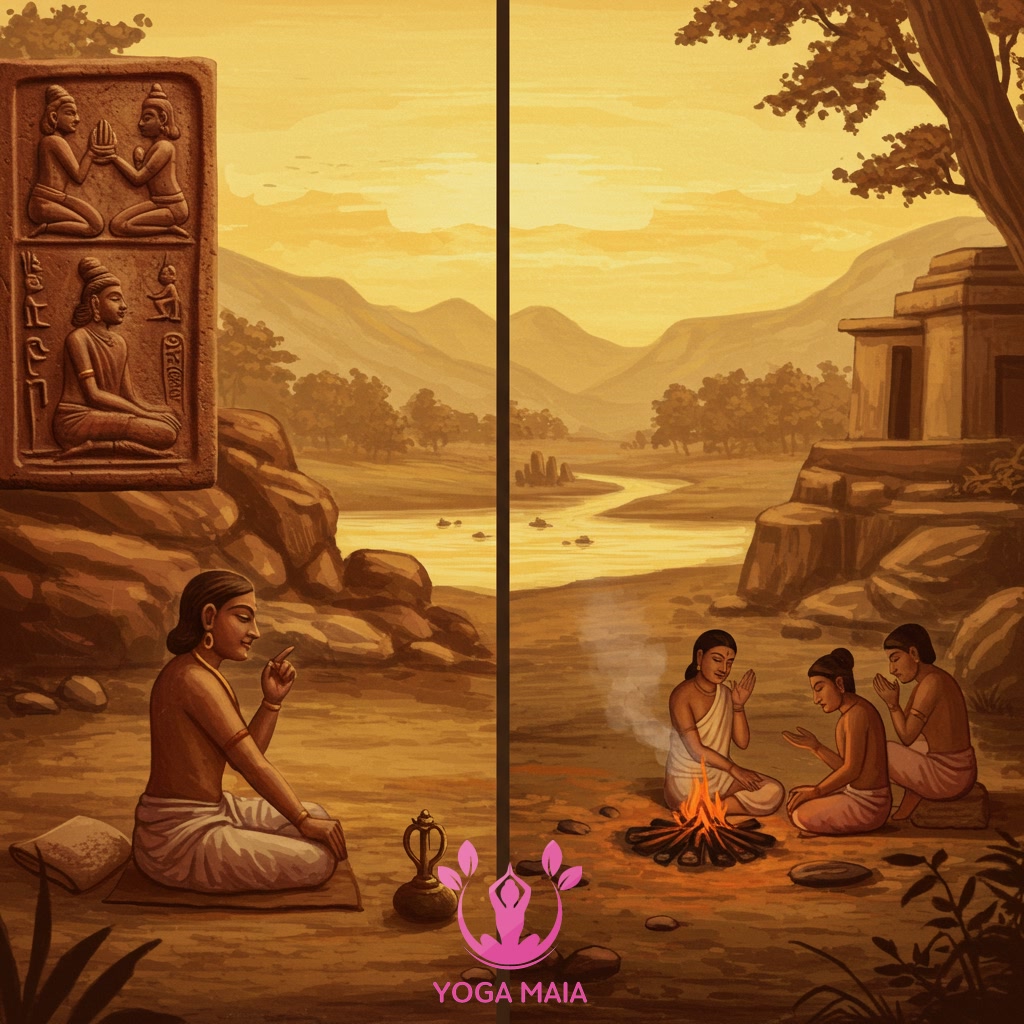 Ancient Origins: From the Indus Valley to the Vedic Period
Ancient Origins: From the Indus Valley to the Vedic Period
Section 2: The Philosophical Bedrock: Yoga in the Upanishads and Pre-Classical Era
Building upon potential early origins, the philosophical underpinnings of yoga significantly emerged during the Vedic and Upanishadic periods (roughly 1500-500 BCE). The Upanishads, considered the philosophical core of the Vedas, introduce key concepts fundamental to later yoga traditions, such as the nature of reality (Brahman), the individual self (Atman), and the relationship between them. They emphasize internal spiritual realization through meditation (dhyana), self-inquiry, and ascetic practices, laying the groundwork for the idea of liberation (moksha). This era saw the development of early ascetic movements (shramana) and spiritual seekers (rishis) who explored techniques for transcending material existence, establishing the intellectual and spiritual environment from which more formalized yoga systems would later arise.
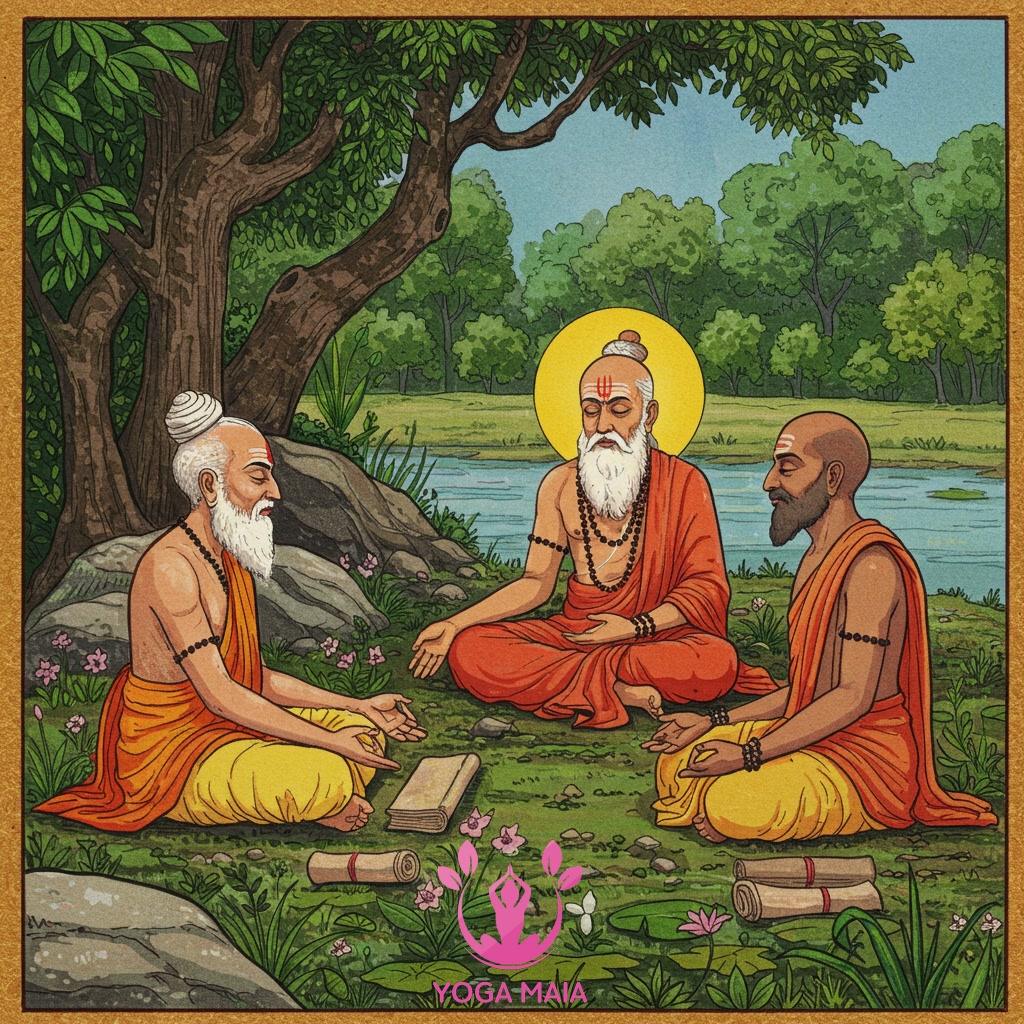 The Philosophical Bedrock: Yoga in the Upanishads and Pre-Classical Era
The Philosophical Bedrock: Yoga in the Upanishads and Pre-Classical Era
Section 3: Systematizing Practice: The Classical Period and Patanjali’s Yoga Sutras
Following the philosophical explorations of earlier eras, the Classical Period, particularly centered around the figure of Patanjali (estimated between 2nd century BCE and 4th century CE), marked a crucial phase of systematization for yoga. Patanjali’s compilation, known as the Yoga Sutras, presented a concise and structured framework for yogic practice and philosophy. This seminal text outlined the eight limbs of yoga (Ashtanga Yoga), providing a clear path towards Samadhi, or liberation. By distilling existing knowledge and practices into aphorisms, the Yoga Sutras offered a practical methodology focused on controlling the mind’s fluctuations (citta vritti nirodhah), establishing a foundational text that profoundly influenced the development of yoga for centuries to come.
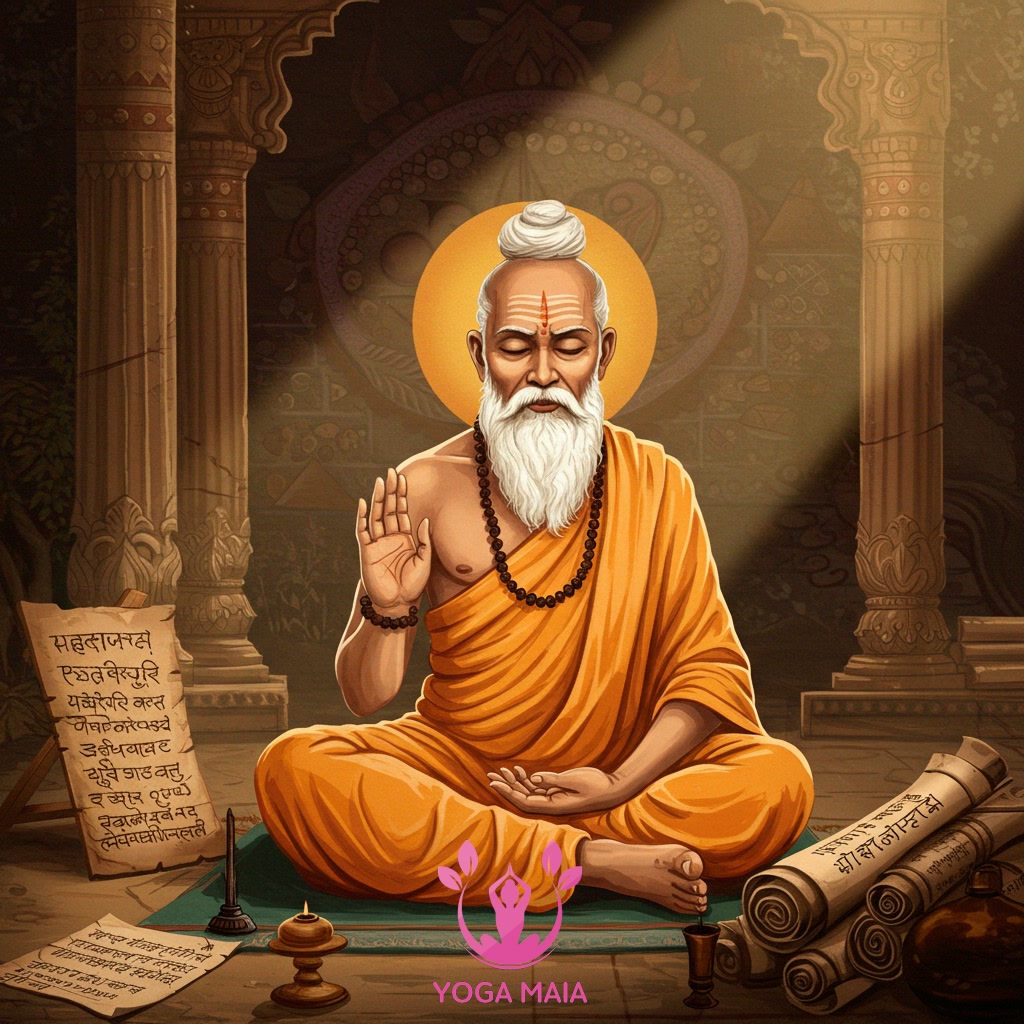 Systematizing Practice: The Classical Period and Patanjali’s Yoga Sutras
Systematizing Practice: The Classical Period and Patanjali’s Yoga Sutras
Section 4: Evolution of Practice: The Rise of Hatha Yoga and Tantra
Following the philosophical explorations of earlier eras, the focus of yoga began to shift significantly during the Post-Classical and Medieval periods. This era saw the rise of Hatha Yoga and the strong influence of Tantra, marking a crucial evolution in practice. Unlike earlier forms that primarily emphasized meditation and philosophical contemplation, Hatha Yoga introduced a systematic approach centered on the physical body. Practices like asanas (postures), pranayama (breath control), and mudras (gestures) became central tools, viewed not just for physical health but as pathways to spiritual liberation. Tantra’s perspective, which saw the body as a microcosm of the universe and a vehicle for spiritual evolution, profoundly shaped Hatha Yoga, integrating concepts of energy channels (nadis) and energy centers (chakras). This development made physical practice a fundamental component of the yoga path.
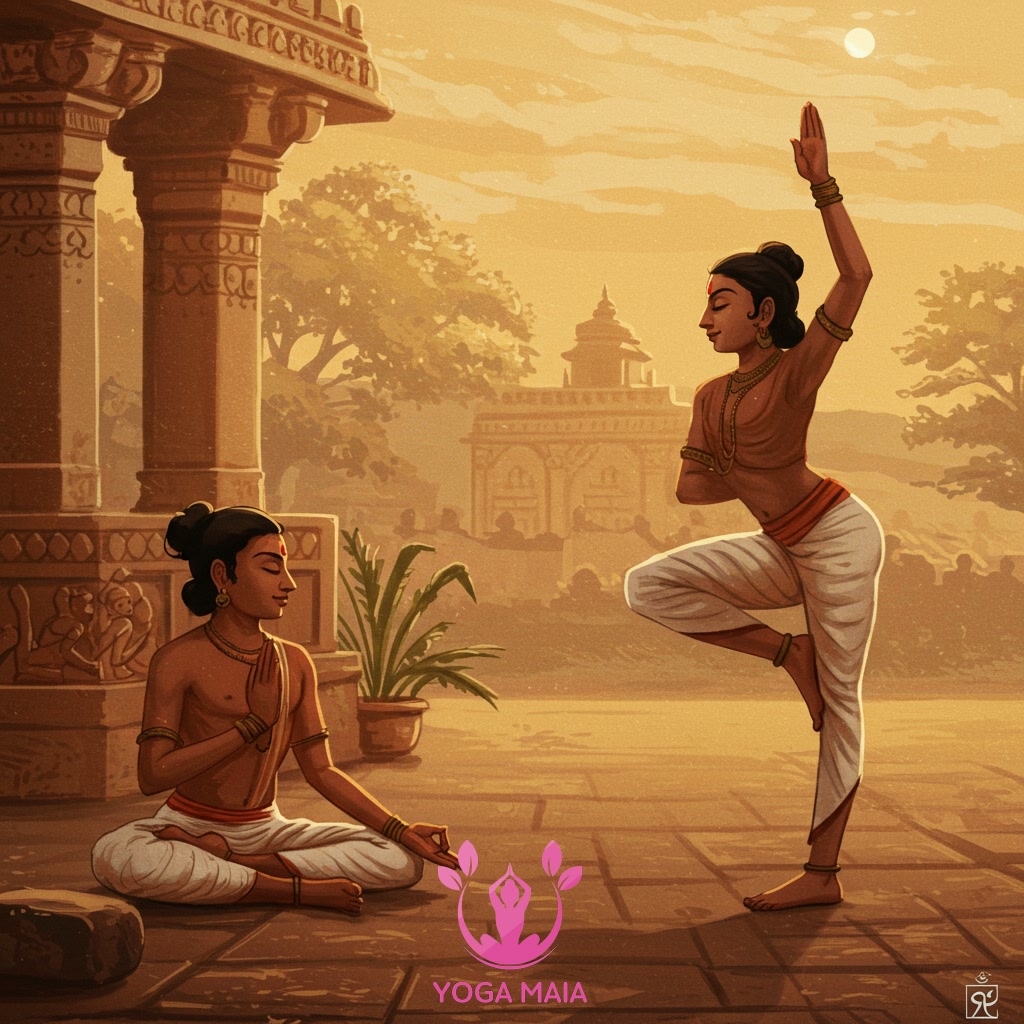 Evolution of Practice: The Rise of Hatha Yoga and Tantra
Evolution of Practice: The Rise of Hatha Yoga and Tantra
Section 5: Yoga’s Global Journey: From India to the Modern World
Building upon the evolution into Hatha Yoga during the Post-Classical period, yoga’s path dramatically expanded beyond India’s borders. Its introduction to the Western world, notably accelerated in the late 19th and early 20th centuries through figures like Swami Vivekananda, marked the beginning of its global journey. Initially presented often through philosophical lenses, the practical physical aspects of Hatha Yoga gradually gained prominence. As yoga spread across continents, it adapted to new cultural contexts, leading to the development of diverse modern styles focused on physical fitness, stress reduction, and well-being, alongside its traditional spiritual dimensions. This global diffusion transformed yoga from a primarily Indian discipline into a worldwide phenomenon, constantly evolving while retaining core principles.
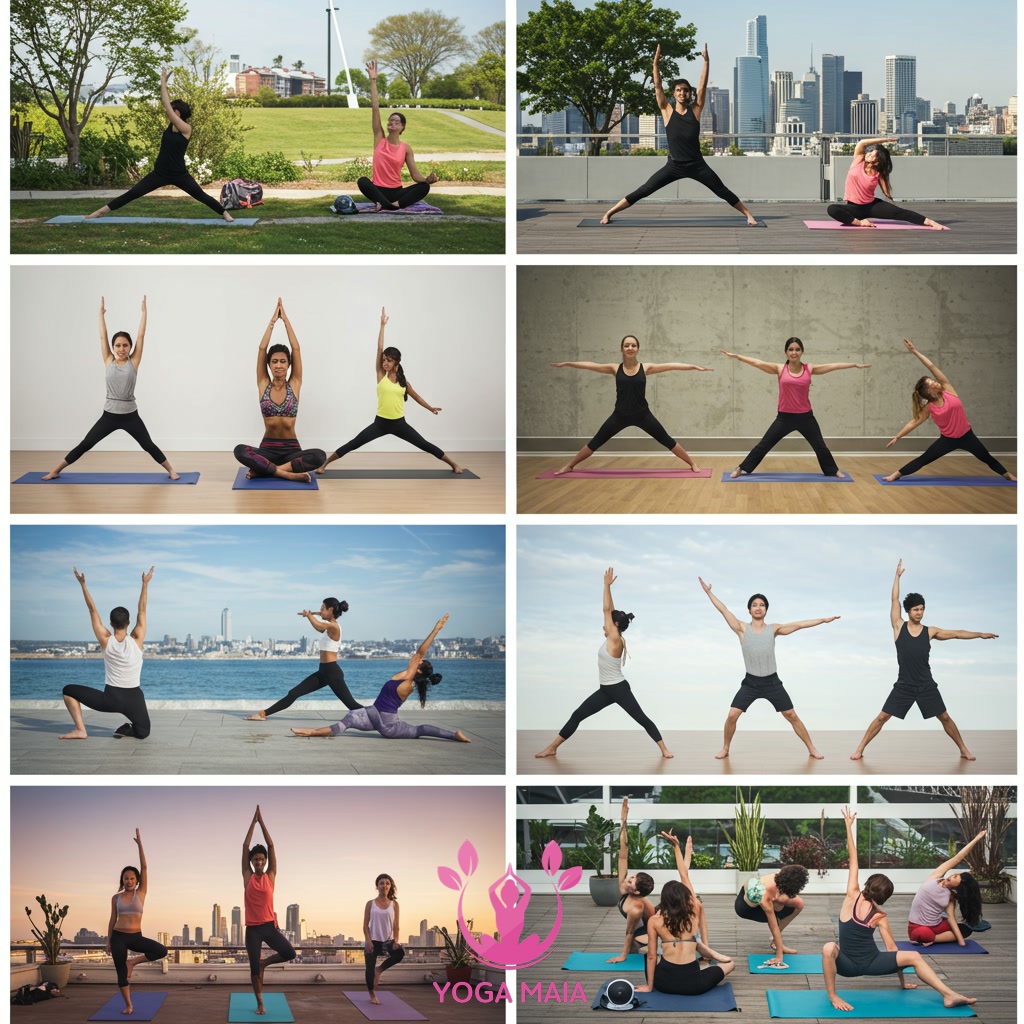 Yoga’s Global Journey: From India to the Modern World
Yoga’s Global Journey: From India to the Modern World












